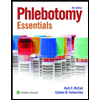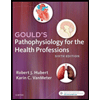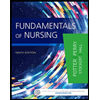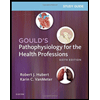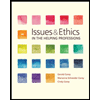Mrs. G HISTORY Mrs. G, a 62-year-old white woman, was seen in the emergency department for complaints of increasing shortness of breath. She stated that she had the flu approximately 1½ weeks earlier and that her breathing has been more difficult since that time. Her ankles have been swollen for the first time, and sleeping during this time has required "two pillows to support her." She stated that occasionally she awakens in the middle of the night noticeably short of breath. These episodes of nocturnal dyspnea are relieved by sitting up for several minutes. She has been producing ¼ cup of yellow sputum since the onset of the flu. Her exercise tolerance was 1 block but is now 20 feet. Mrs. G stated that 7 years ago her family physician told her she had pulmonary emphysema. Mrs. G started smoking at age 12 and smoked approximately 2 packs of cigarettes a day until she quit 2 years ago. Mrs. G took the following home medications: small-volume nebulizer (SVN) with metaproterenol four times a day, theophylline (Theo-Dur tablets) 200 mg two times a day, and oxygen via nasal cannula at 1 L/min. QUESTIONS What symptoms should be explored in greater detail? How many pack-years has this patient smoked, and how is this significant in terms of producing pulmonary symptoms? What is the most likely cause of the patient’s pulmonary emphysema? Chapter 4 Chronic Obstructive Pulmonary 4. What is the most probable cause of the patient's exacerbation? 5. What is the pathophysiological significance of the patient's orthopnea and paroxysmal nocturnal dyspnea (PND)? More on Mrs. G PHYSICAL EXAMINATION General. The patient is an alert, cachectic white woman in moderate respiratory distress, sitting on the edge of her bed, leaning forward with her elbows braced on the bedside table. She appears to have difficulty talking secondary to dyspnea and pursed-lip breathing. Vital Signs. Temperature is 37.0°C (98.6°F) orally; respiratory rate is 28/min; pulse is 108/min; and blood pressure is 142/80 mm Hg. HEENT. Unremarkable. Neck. Trachea is midline without stridor or masses. Carotid pulses are + + without bruits; no lymphadenopathy or thyromegaly is present; patient is using her sternocleidomastoid muscles during inspiration; no JVD is present. Chest. Increased anteroposterior diameter, large supraclavicular fossae, and mild abdominal paradox during respiratory efforts are present; significant protrusion of the ribs with moderate retractions is present during inspiration, with narrowing of the subcostal angle; there is chest expansion of 3 cm at the eighth thoracic vertebra and a diffuse reduction in tactile fremitus on palpation; PMI is not identified with palpation; and there is increased resonance bilaterally on percussion. Heart. Heart sounds are very distant, with a regular rate and rhythm of 108/min without murmurs. Lungs. There is a bilateral reduction in breath sounds anteriorly and posteriorly with a prolonged expiratory phase on auscultation; occasional scattered expiratory wheezes are also present. Abdomen. Soft, nondistended, and nontender with bowel sounds present; no masses or organomegaly present. The abdomen sinks inward with each inspiratory effort (abdominal paradox). Extremities. No cyanosis, clubbing, or peripheral edema is present. 6. Why is the patient pursed-lip breathing, and what physiological effect does it produce? 7. Why is the patient leaning forward on her elbows to breathe? 8. What is the significance of the abdominal paradox during respiratory efforts? 9. What pathophysiology accounts for the patient's increased resonance, decreased tactile fremitus, and decreased heart sounds? 10. Why is the patient's PM not felt? What is indicated when the PMI is in the epigastric area? 11. What is the significance of the chest expansion measurement?
Mrs. G
HISTORY
Mrs. G, a 62-year-old white woman, was seen in the emergency department for complaints of increasing shortness of breath. She stated that she had the flu approximately 1½ weeks earlier and that her breathing has been more difficult since that time. Her ankles have been swollen for the first time, and sleeping during this time has required "two pillows to support her." She stated that occasionally she awakens in the middle of the night noticeably short of breath. These episodes of nocturnal dyspnea are relieved by sitting up for several minutes.
She has been producing ¼ cup of yellow sputum since the onset of the flu. Her exercise tolerance was 1 block but is now 20 feet. Mrs. G stated that 7 years ago her family physician told her she had pulmonary emphysema. Mrs. G started smoking at age 12 and smoked approximately 2 packs of cigarettes a day until she quit 2 years ago. Mrs. G took the following home medications: small-volume nebulizer (SVN) with metaproterenol four times a day, theophylline (Theo-Dur tablets) 200 mg two times a day, and oxygen via nasal cannula at 1 L/min.
QUESTIONS
- What symptoms should be explored in greater detail?
- How many pack-years has this patient smoked, and how is this significant in terms of producing pulmonary symptoms?
- What is the most likely cause of the patient’s pulmonary emphysema?
Chapter 4 Chronic Obstructive Pulmonary
4. What is the most probable cause of the patient's exacerbation?
5. What is the pathophysiological significance of the patient's orthopnea and paroxysmal nocturnal dyspnea (PND)?
More on Mrs. G
PHYSICAL EXAMINATION
- General. The patient is an alert, cachectic white woman in moderate respiratory distress, sitting on the edge of her bed, leaning forward with her elbows braced on the bedside table. She appears to have difficulty talking secondary to dyspnea and pursed-lip breathing.
- Vital Signs. Temperature is 37.0°C (98.6°F) orally; respiratory rate is 28/min; pulse is 108/min; and blood pressure is 142/80 mm Hg.
- HEENT. Unremarkable.
- Neck. Trachea is midline without stridor or masses. Carotid pulses are + + without bruits; no lymphadenopathy or thyromegaly is present; patient is using her sternocleidomastoid muscles during inspiration; no JVD is present.
- Chest. Increased anteroposterior diameter, large supraclavicular fossae, and mild abdominal paradox during respiratory efforts are present; significant protrusion of the ribs with moderate retractions is present during inspiration, with narrowing of the subcostal angle; there is chest expansion of 3 cm at the eighth thoracic vertebra and a diffuse reduction in tactile fremitus on palpation; PMI is not identified with palpation; and there is increased resonance bilaterally on percussion.
- Heart. Heart sounds are very distant, with a regular rate and rhythm of 108/min without murmurs.
- Lungs. There is a bilateral reduction in breath sounds anteriorly and posteriorly with a prolonged expiratory phase on auscultation; occasional scattered expiratory wheezes are also present.
- Abdomen. Soft, nondistended, and nontender with bowel sounds present; no masses or organomegaly present. The abdomen sinks inward with each inspiratory effort (abdominal paradox).
- Extremities. No cyanosis, clubbing, or peripheral edema is present.
6. Why is the patient pursed-lip breathing, and what physiological effect does it produce?
7. Why is the patient leaning forward on her elbows to breathe?
8. What is the significance of the abdominal paradox during respiratory efforts?
9. What pathophysiology accounts for the patient's increased resonance, decreased tactile fremitus, and decreased heart sounds?
10. Why is the patient's PM not felt? What is indicated when the PMI is in the epigastric area?
11. What is the significance of the chest expansion measurement?
Unlock instant AI solutions
Tap the button
to generate a solution
